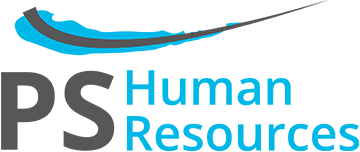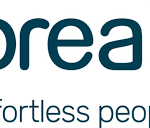When your staff call in sick, it can cause a real headache. And COVID hasn’t made this any easier.
A recent report has shown that requests for sick notes from doctors are up 78%. And 52% of absence is related to stress, anxiety and depression.
All of this unplanned absence is costing small and medium-sized UK businesses in excess of £900 million, annually.
With that in mind, is it time that you took a serious look at the ways you can reduce absence in your business?
What is absence management?
Absence – or attendance – management encourages you to look at the ways you can decrease the amount of unplanned absence that occurs in your business.
The effect of unplanned absence
Not only is there a financial cost to unplanned absence (think sick pay, loss of productivity, and disruption), but it can also have a huge impact on the rest of your team, too.
When a member of your team is regularly off sick, it can cause the rest of the team to feel resentment towards that person. There will be feelings of dissatisfaction, increased stress (because, remember, it’s these people that will be picking up the slack), and frustration.
But high levels of unplanned absence can be a sign of more going on within your business than appears on the surface.
Are people off sick because they’re genuinely ill, or is it because they don’t feel competent at their job? Or maybe they are being bullied by a colleague? Perhaps your working environment is just too stressful or even toxic? Are they simply the wrong hire?
There’s a whole host of reasons that someone might be off work aside from being unwell. It’s your job to spot patterns or problems. Tracking sickness will help you to do that easily, but more on that later.
Take a look at your policy
When did you last review your sickness policy? Although the details may not have changed, you may have introduced new schemes that should be a part of it. It’s also important that you have things worded correctly so that, while employees know they’re entitled to time off when they’re unwell, they’re aware that the policy shouldn’t be abused. It can be a fine line to tread, which is why it pays to work with an expert HR consultant to do this for you.
Recording unplanned absence
It’s a really good idea that you record any instances of unplanned absence in your business, rather than waiting for someone’s absence to become a problem.
By doing this, it means you’ll be able to spot any patterns in absence, and therefore highlight any problems long before you might do otherwise.
For example, perhaps someone takes every third Friday off sick, or maybe one of your teams has a much higher rate of absence than the others. When you record this data, it will become really easy to identify areas of concern, and give you a better opportunity to tackle and resolve potential problems.
One method that you may use to record and monitor absence is the Bradford Factor. This is a scale that helps you give weighting to any absence to help you spot areas of concern more easily.
Simply put, you record instances of absence x days absent over 52 weeks. This means that someone who takes frequent short periods of absence will total a higher score than someone who takes more days over fewer instances.
You can apply your own threshold measures to the scale, depending on the potential impact absence will have on your business.
It’s worth noting that while the Bradford Factor is fair in a sense (it treats everyone the same), for those employees with disabilities or long-standing issues, for example, it can be unfair. You need to assess each case individually and act reasonably when reading the results, as always.
The cause of absence
While there will certainly be a genuine reason behind most sick days taken, it’s important that you look at the cause behind each absence in your business. Failing to do so could lead to bigger issues within the company that are more difficult to fix.
Is absence due to illness or injury? Is it likely to be long or short term? Perhaps someone is taking time off to care for sick children, or parents, or a partner? Maybe someone is being bullied by a colleague? Find out whether your employees need additional support from the business and your managers.
You should also be mindful of the ‘isms’.
You probably already know about absenteeism. That’s when someone habitually takes sick leave.
Then there’s leavism, which is the opposite. It’s where people refuse to take their annual leave, or work instead of resting when they do. A massive three quarters of people have seen leavism taking place in their workplace, and it’s usually most noticeable when people continue to check and reply to emails, check-in on projects, or take work-related calls while off.
Finally, there’s presenteeism, which is where an employee continues to present at work, even if they are genuinely ill. Not only is this bad for their health and wellbeing, but it also puts others at risk of illness, which could cause more problems for your business.
It’s really important that you and your managers spot any of the ‘isms’ and delicately broach the subject with employees where necessary.
Ill health dismissal
On occasion, it may be your last resort to dismiss an employee on the grounds of ill health. However, it’s vital that this is a last resort measure only, and you take reasonable steps to help get your employee back to work first.
These steps may include you approaching their GP for a report on their health (with your employee’s permission), arranging an occupational health assessment, or making reasonable adjustments to enable them to do their job.
In some case, this may not work, and it may be your only option to dismiss your employee. In these cases, it’s important to act with sensitivity and fairness. I would strongly recommend taking expert advice and following ACAS rules on this one.
The Equality Act 2010 states that a person must not be discriminated against because they have a disability, or someone thinks that they do, or because they are connected to someone with a disability.
5 practical ways you can reduce absence
As a business owner or manager, you can implement things that will help to minimise absence within your business, and it’s easier than you might imagine. Here are 5 of the best…
1. Be more flexible
It’s something we’re all used to these days, but giving your people a little more flexibility can mean the difference between someone calling in sick with a sniffle, or them working from home instead.
It could mean that someone work from 7am – 3pm, so that they can still collect their children from school.
These days, people simply don’t have the time to deal with all of their responsibilities in life. Some of the sick days that people take may simply be used to ‘catch up’. So, offering more flexibility, whether that’s bringing in a hybrid working policy, or flexi-time, could dramatically decrease the number of sick days people use.
2. Be clearer with your guidelines
Your people should know that, while you don’t expect them to come into work with the flu, taking a day off for a trivial issue is also unacceptable.
Look at ways you can support your team, such as working from home with a bad back, or giving them time off for medical appointments, so they don’t use a whole day sick for a 20-minute appointment.
3. Introduce a wellbeing initiative
Looking out for your peoples’ wellbeing can reduce stress and increase fitness. It’s a no-brainer.
If you can afford a grand scheme, like gym memberships, or subscriptions to mental health apps, go for it, but likewise, you don’t have to spend a fortune to make a difference. Encourage people to have catch-up meetings while taking a walk, swap the office doughnuts for a fruit bowl and save the cakes for special occasions only.
You could even create a company challenge, to see which team can walk, swim or cycle the most miles each month. Little things can have a big impact.
4. Introduce better communication
Could it be that people take sick leave because they’re unaware of their options?
Schedule regular 121 meetings to open lines of honest, confidential communication between employees and managers. And make sure that, if anyone is showing signs of poor mental or physical health, you approach them to see how you can help.
5. Train your managers
Your managers are the frontline in keeping your people well and healthy. They have a lot to deal with, so make sure they’re equipped with the tools they need to identify and tackle any issues in the most sensitive manner. A good balance is crucial to ensure your business isn’t affected with presenteeism or absenteeism.
As always, a careful and measured approach is in your best interests when it comes to dealing with absence. If you’d like any further advice, we’d be glad to help. Just give us a call to arrange a conversation.





